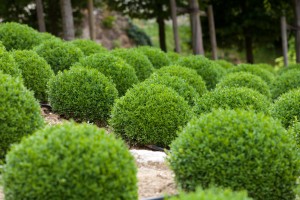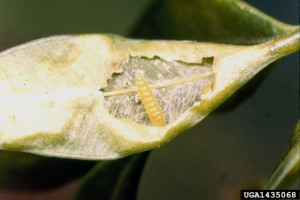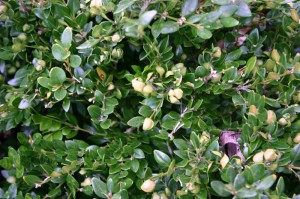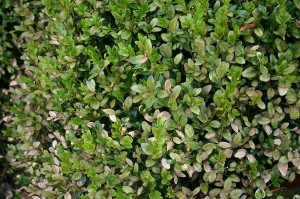 What are pests that feed on Boxwoods?
What are pests that feed on Boxwoods?
Boxwoods are a great choice when considering adding evergreen shrubs in your landscape design. They range from medium to dark green, and come in a variety of size variations and growth characteristics. These shrubs are fairly slow growing which makes them a great choice when trying to keep them confined to a smaller space under a window sill or within a landscaping bed. Property owners can trim these shrubs to either a formal, tight appearance, or allow them to develop naturally with giving them a slight hand-pruning occasionally.
List of Pests that feed on Boxwoods to monitor
As a landscaping company, our landscape designers often use Boxwoods in their plans. We also see our share of Boxwoods on both residential and commercial properties that we maintain both with landscape maintenance and with our tree services. Although a terrific choice for most sites, there are several pests that a property owner should be aware of if they want their Boxwood shrubs to stay beautiful.

Boxwood Leafminers
These small larvae tunnel within leaf tissue, feeding on vital nutrients. Leaves will often exhibit yellow to brown areas and can prematurely drop as damage worsens. Spraying Boxwoods with systemic insecticides can provide some control, but it is often difficult to get enough control materials into the interior of the plant tissue. This is why performing an annual soil-applied systemic insecticide treatment does a great job at leafminer control. This material is circulated throughout the plant, and ingested by leafminers when they feed.

Boxwood Psyllids
This small flying insect uses its piercing/sucking mouthparts to extract plant juices from the newest growth. Damage is easy to spot as the new leaves cup tightly. Boxwood Psyllid damage isn’t typically fatal to Boxwoods, but it can make plants look somewhat unsightly. Psyllid control can be managed fairly easily by treating them in dormant seasons with horticultural oil to smother eggs and spraying in spring when they are present. A systemic soil-applied insecticide treatment will also help to provide control on feeding insects.

Boxwood Spider Mites
Mites feed on a number of plants, and Boxwoods are no exception. Their saliva is toxic to plant tissues and causes the yellow stippling you see in this picture. As mite populations increase Boxwoods will lose color and leaves will prematurely drop. Spraying shrubs with horticultural oil in the dormant season can reduce the population of mites and spraying during the year with mite control materials will also reduce this pest activity.
Conclusion
Whether you are trying to keep Boxwoods or any other trees and shrubs looking great on your property, we would love to talk to you how our Tree & Shrub Care services can keep your landscape looking fantastic.
Boxwood leafminer larva feeding inside leaf by Clemson University – USDA Cooperative Extension Slide Series, Bugwood.org, Attribution 3.0 license
Psyllid damage on Boxwood by SB Johnny – Creative Commons Attribution Share Alike 3.0 Unported license
Mite damage on Boxwood by SB Johnny – Creative Commons Attribution Share Alike 3.0 Unported license

